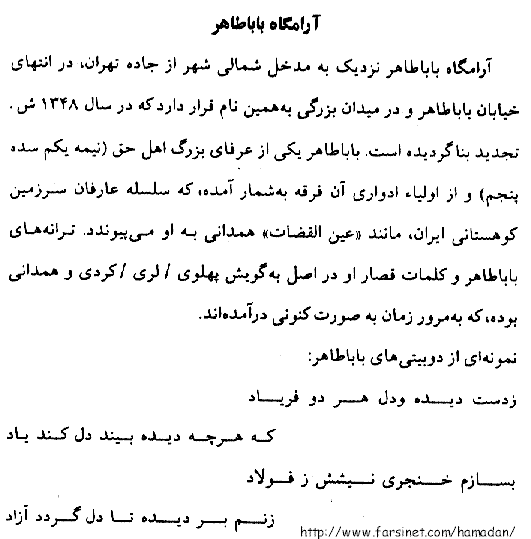Baba Tahir
Bābā Taher, also Bābā Tahir and Oryan (or Aryan), called (Persian باباطاهر, Luri: باوا تاهر; * to 944; † around 1019 ( further called data: * 1000, † by 1055, and others), Hamadan, Iran) was a Persian poet of the 10th and 11th century. His tomb is in Hamadan.
Life
Bābā Taher grew up in Hamadan and is one of the first major poet of Persian literature. There is little information about his life, which has led to controversy in the research. The nickname Oryan ( the naked man ) does, however, suggest that Bābā Taher was a wandering dervish ( Sufi ). In research Bābā Taher's death is dated primarily to the year 1019, although also go here opinions differ. It is believed that he has become 75 years old, which would have made him a contemporary of Firdausi and Avicenna as well as an immediate predecessor Omar Khayyam.
Work
Bābā Taher wrote mostly quatrains ( ʿ ī Ruba ) in the local dialect Māzandarāns (also called Pahlaviat ), but also to Lori, Kurdish, Arabic and the dialects of Hamadan. To be able to deliver it without any concrete evidence, are to him the 300 quatrains in a do beiti ( two ) meter and a collection of Arabic maxim - the one philosophical, the other mystical nature - attributed. His poems deal with love themes and topics from the Mystic area. They often form the basis of classical Iranian music, where they are accompanied by the long-necked lute Setar.
Expenditure
- Manouchehr Adamiyat (ed.): Divan -e Bābā Taher, Atellyeh Honar: Tehran 2001.









.jpg)
